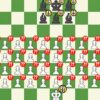The air in Harrison, New Jersey, carried more than just a pre-autumn chill; it was thick with a familiar, unsettling sense of déjà vu for fans of the U.S. Men`s National Team. A 2-0 defeat to South Korea, ostensibly a friendly match, peeled back layers of optimism to reveal the raw nerves beneath. With the FIFA World Cup looming large on the horizon – a mere nine months away – the question isn`t just about results, but about identity, cohesion, and whether head coach Mauricio Pochettino`s ambitious experiment can coalesce into a formidable unit before the global spotlight intensifies.
The Architect`s Vision: Organized Chaos or Just Chaos?
Pochettino, a tactician known for his high-energy, fluid systems, envisioned an “organized chaos” for the USMNT. It`s a tantalizing concept: a team so instinctively attuned that their fluidity appears chaotic to opponents, yet maintains a hidden structure. In practice, however, the team`s performances often lean heavily on the “chaos” side of the equation, with the “organization” proving elusive.
Nearly a year into his tenure, Pochettino has presided over a revolving door of selections. Fourteen different starting lineups in just 17 matches is less a testament to tactical flexibility and more a relentless, often bewildering, series of auditions. This isn`t merely tweaking; it`s a full-blown laboratory experiment, with various players thrown into the deep end, often without the benefit of consistent partnerships. While the desire to vet every potential contributor for a World Cup squad is understandable, one might cynically wonder if the team is still learning the alphabet while the rest of the world is writing novels.
“We are testing too many things,” Pochettino admitted post-match, defending his approach. “But [Tristan Blackmon], we wanted to see because we`d seen in Vancouver, I think, [he] has the profile to be in the national team but also he needs to live the experience to be in this level.”
This sentiment, while valid for individual player development, raises a critical strategic dilemma: at what point does individual experience-gathering impede collective development? The line, it appears, is currently quite blurred.
Symptoms on the Pitch: Slow Starts and Defensive Drift
The consequences of this continuous churn are stark. The USMNT has developed a worrying habit of starting games on the back foot, conceding early goals and often leaving themselves with a mountain to climb. A grim statistic underscores this point: the team has been outscored 11-2 in their last seven first halves against opponents ranked in FIFA`s top 25. Against South Korea, it was the familiar script: two first-half goals conceded, leaving the team chasing the game.
Defensively, the team often appears permeable. While talents like Sergino Dest offer dazzling attacking flair, his defensive commitments sometimes feel like an afterthought, as highlighted in Son Heung-min`s opening goal. Debutants, such as Tristan Blackmon, are thrust into high-stakes environments, and while their potential might be clear, their immediate impact can be less than reassuring. The defensive backbone, particularly without key figures like Chris Richards and Antonee Robinson, seems to lack the necessary steel and understanding.
Paradoxically, the USMNT often dominates statistical metrics. Against South Korea, they outshot their opponents 17-5 and boasted a significantly higher expected goals (xG) tally (2.27 to 0.74). Yet, the scoreboard told a different story. This suggests a disconnect between creating opportunities and clinical execution, both in finishing attacks and preventing crucial defensive breakdowns.
Voices from the Locker Room: The Weight of the Badge
Midfielder Tyler Adams, a seasoned leader, shed light on the immense pressure faced by new players entering the national team setup. “It`s not always easy to come into a national team. I remember what it was like when I came into my first national team camp and I played like shit so I understand what it`s like right now in the lead-up.” His candid reflection underscores the psychological toll of such rapid integration, especially with a World Cup on home soil fast approaching.
The onus, Adams suggests, falls on the established core to “get them feeling comfortable and have them playing at their best.” This collective responsibility is crucial, yet constant rotation makes building that comfort and understanding an uphill battle. It`s difficult to form strong bonds and intuitive understanding when the partners change almost every week.
The World Cup Crucible: A Deadline Looms
This period of extensive experimentation, while noble in its intent, feels increasingly like a race against time. The “valiant project” might have overstayed its welcome, with each performance only reinforcing “preconceived notions” rather than forging new certainties. Pochettino`s predecessor, Gregg Berhalter, also struggled to secure significant wins against top-tier opposition, suggesting a deeper systemic issue for the USMNT beyond just the coaching change.
The ultimate question is not *if* the USMNT will be ready, but *how*? Will the “organized chaos” finally materialize, or will the persistent experimentation leave them unprepared for the unforgiving stage of the World Cup? The upcoming matches, including the clash against Japan, represent some of the last opportunities to solidify a core, define a tactical identity, and instill the crucial cohesion that transforms a collection of talented individuals into a truly formidable team. The clock is ticking, and the American soccer public watches with bated breath, hoping the grand experiment yields a masterpiece, not just a messy equation.










